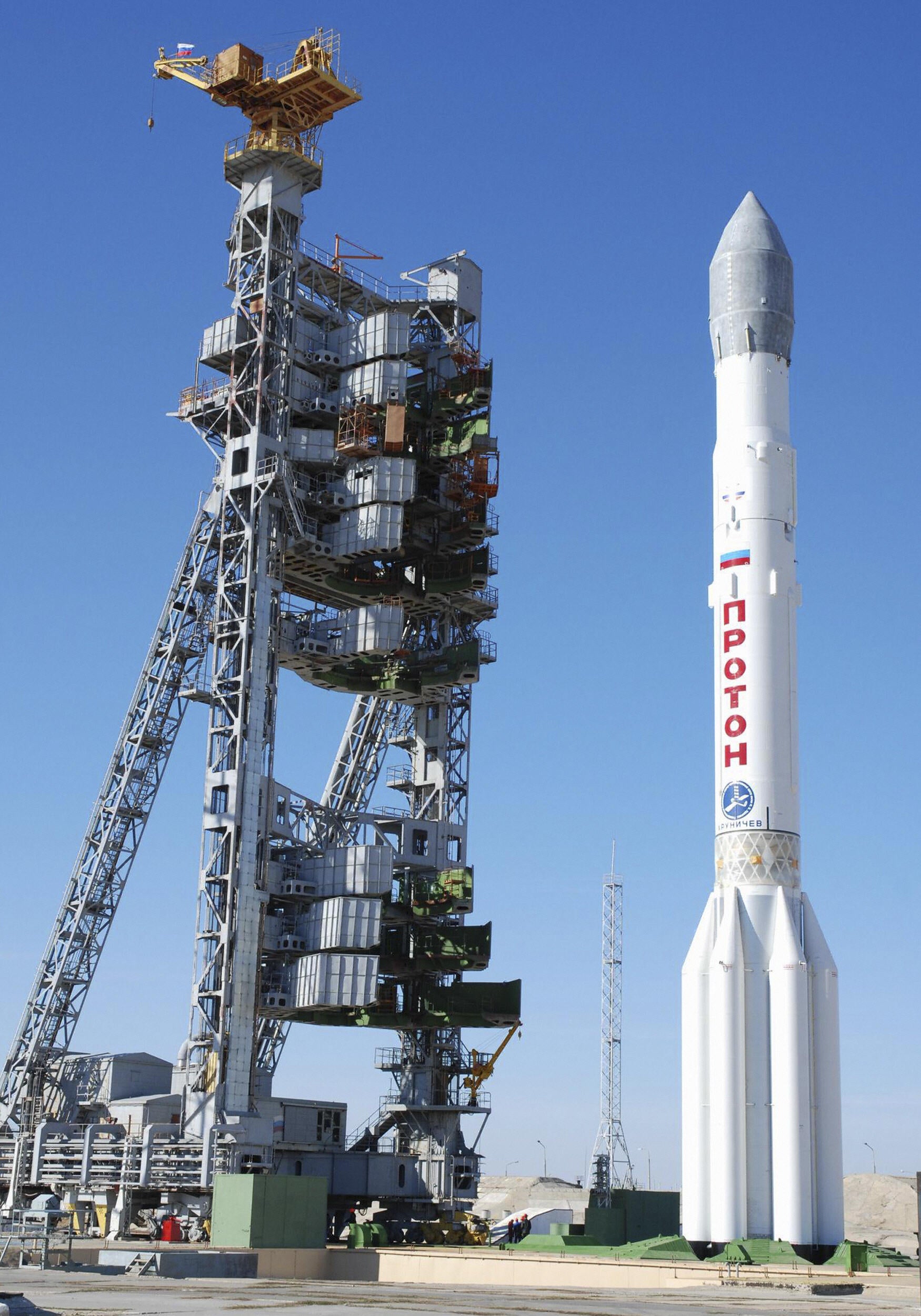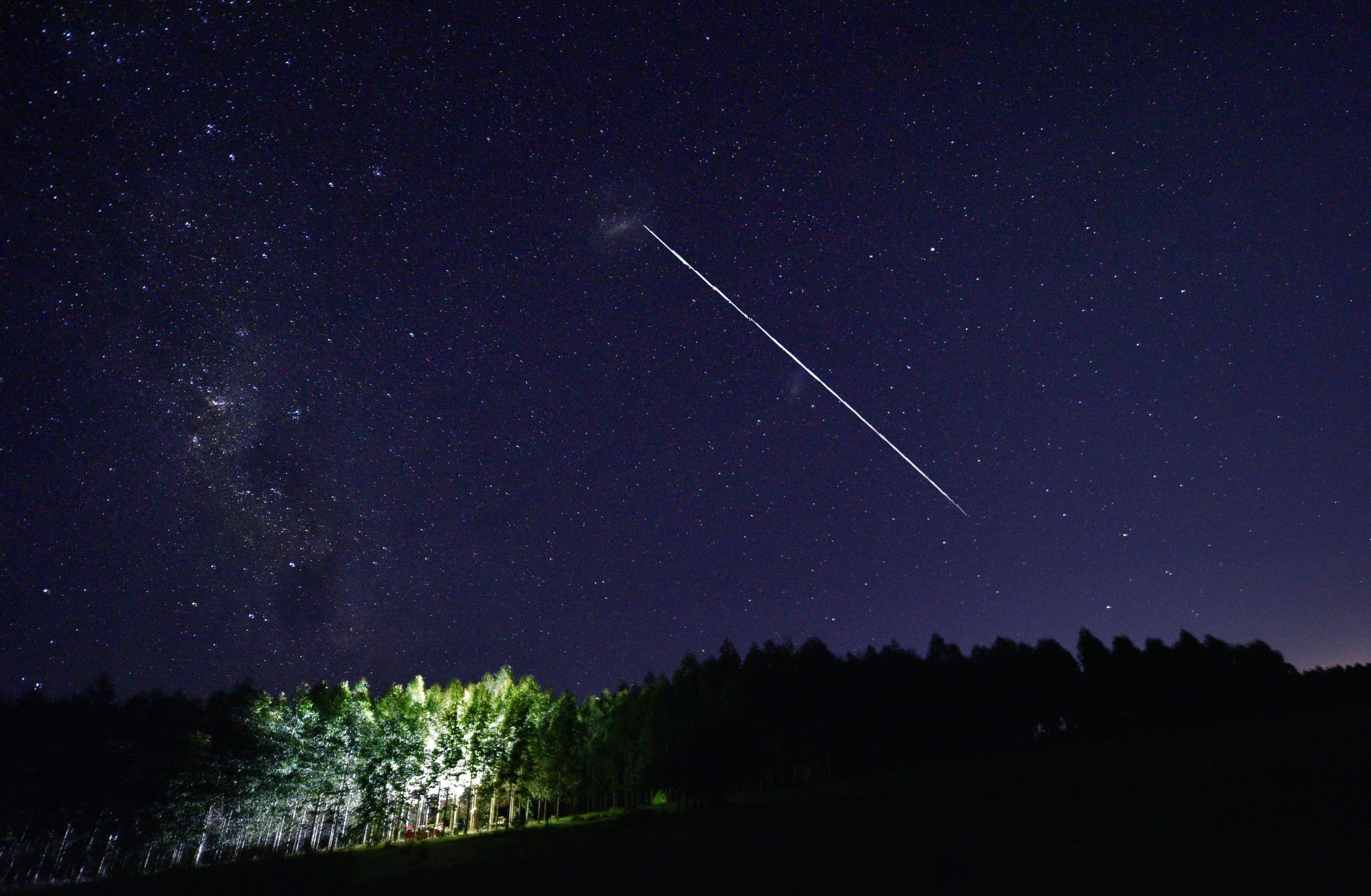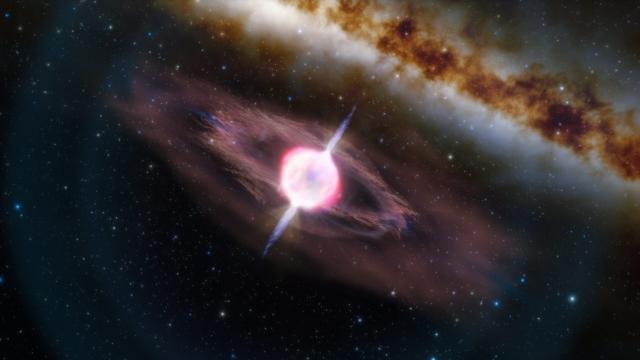In 2017, a team of astronomers looking at the oldest and most distant galaxy in the observable universe saw something weird in their data: a flash of bright light, which they last year reported could have been a gamma-ray burst that emanated from a star within the ancient galaxy. But other astronomers weren’t so sure, and this week two papers in Nature Astronomy posit an alternative explanation.
One of those papers focused on the likelihood of the flash coming from a gamma-ray burst based on the overall odds of detecting gamma-ray bursts; the other paper identified debris from Breeze-M, the upper stage of Russia’s Proton rocket, as the most likely source of screwy data.
Gamma-ray bursts can come from a number of sources that can look a bit different from one another, but generally, the bursts of radiation are fleeting. They can range anywhere from milliseconds to a full minute, but given the vastness of the night sky and how short-lived the bursts are, they’re easy to miss unless a telescope is looking at the right place at the right time.
The earlier group of astronomers calculated the probability of spotting the purported gamma ray burst from the early universe, in the galaxy GN-z11, at about one in 10 billion. So, some pretty long odds — long enough that other astronomers began to think about alternative possibilities for the flare’s source. Sometimes the nature of a flash — whether from one of the most violently explosive phenomena in the known universe or a mere reflection of sunlight off a passing satellite — comes down to probability.
According to astrophysicist Charles Steinhardt, lead author of the paper suggesting the flare could have been reflected light, the slope of earlier team’s data looked a lot more like that of a star than a gamma-ray burst. “And so you begin thinking, ‘Well, is there some way you can get something that looks like a star?’” Steinhardt told Gizmodo in a video call. “We know a lot of things look like the Sun; basically, anything that reflects sunlight.” Like, for instance, a chunk of metal floating around Earth.
Another group soon provided a likely answer to his question, with their paper also published this week in Nature Astronomy. That paper identified a single piece of space debris — the upper stage of a Russian rocket — as the likely culprit for the flare.

The 2017 team “found the most interesting object in the sky, they found something really weird and exciting about it, they came up with their best explanation, and they published it, because that’s what you do,” said Steinhardt, who is affiliated with the Cosmic Dawn Centre at the University of Copenhagen in Denmark. “I would’ve liked them to be right.”
To identify the Russian rocket among the 23,000 pieces of space debris larger than a softball currently in orbit, a team led by Michał Michałowski, an astrophysicist at Adam Mickiewicz University in Poznán, Poland, looked at the orbits of known space junk and satellites on the day that the original team’s observations were made from the top of Mauna Kea, Hawaii. Only one, the Breeze-M Russian rocket stage, was close enough to interfere with the observations.
The original team, led by Linhua Jiang of the Kavli Institute for Astronomy and Astrophysics at Peking University in Beijing, China, wrote a reply to the two new papers, which was also published in Nature Astronomy yesterday. They note that they ruled out the Russian rocket stage in their original analysis, using calculations from an online tool called Calsky, used for determining where things are in the sky. Calsky has shut down, but given the number of satellites and space junk out there, perhaps it’s a good idea for a new tool to be available publicly (and some are being worked on). Jiang’s group noted that satellite “glint,” as such sunlight reflections are called, cannot be ruled out.
With issues like the recent flare, “if all you can see is a brief increase in brightness, and you don’t have high spectral resolution, one flash looks kind of like another,” Jonathan McDowell, an astrophysicist at the Harvard-Smithsonian Centre for Astrophysics, told Gizmodo in an email.
And space — at least the space we humans currently use for our satellites and space telescopes — isn’t getting any more spacious, either. According to McDowell, SpaceX’s Starlink satellite project will increase the number of large objects in low Earth orbit by a factor of 100.

“This was definitely not a rare situation. Satellites ruin astronomical data every day,” Michałowski told Gizmodo in an email. “The situation will become worse when there are more satellites, because then it will not be possible to choose satellite-free regions of the sky and larger fractions of images will be useless.”
Besides astronomical observations, more satellites can obstruct even naked-eye observations of the cosmos. That spells trouble for groups like Indigenous communities in Australia, whose traditions rely on constellations, as reported by Vice. So-called “mega-constellations” of satellites increase the sky’s brightness, according to a recent paper published in the Monthly Notices of the Royal Astronomical Society, by reflecting light from the Sun.
Still, GN-z11 is a remarkable thing. Such an ancient galaxy — seen as it was 13.4 billion years ago — could yet offer insights on the formation of the early universe. But to get any useful takeaways from it, we’ll have to look past all the stuff we’ve put into orbit.
